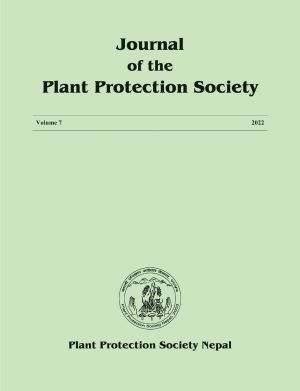Abundance and Diversity of Soil Arthropods in Different Habitats in Chitwan Nepal
DOI:
https://doi.org/10.3126/jpps.v7i01.47299Keywords:
Biodiversity, ecosystem, insects, orchard, organic farmAbstract
Arthropod diversity is generally influenced by the type of habitat in an agro-ecosystem. Crop diversity, soil types, nature of habitats (intensive, semi-intensive and natural), proximity to natural habitats, landscape complexity etc. are the major arthropod diversity influencing factors. Hence, this study was designed to investigate the diversity of various arthropod species among different habitats such as mango orchard, litchi orchard, vegetable field, organic field and uncultivated land during March 2021. Arthropod sampling was taken on every three- day interval using pitfall trap. The composition, relative abundance, and diversity indices of the arthropods of five different habitats were analyzed. Maximum abundance was recorded in uncultivated land (N = 398) and minimum in the vegetable field (N = 61). Shannon-Weiner Diversity Index (1.76) and species richness (9.67) were found highest in mango orchards. The greatest evenness was recorded in the vegetable field (0.91) and more dominance index was recorded in uncultivated land (0.60). There was a significant difference in total abundances of arthropods between vegetable fields than in the organic and uncultivated fields, being highest in uncultivated land followed by litchi, mango and organic field. Hymenopterans were the most abundant order (53.55%) followed by Coleoptera and Arachnida. These arthropods were crop pests and beneficial. Beneficial arthropods population was more than crop pests. Such beneficial arthropods play a vital role to deliver an ecosystem service. This study can help to develop a conservation and management protocol for beneficial arthropods in the agro-ecosystem.
Downloads
Downloads
Published
How to Cite
Issue
Section
License

This work is licensed under a Creative Commons Attribution-NonCommercial 4.0 International License.
© Plant Protection Society of Nepal

